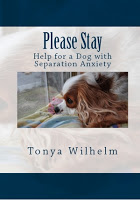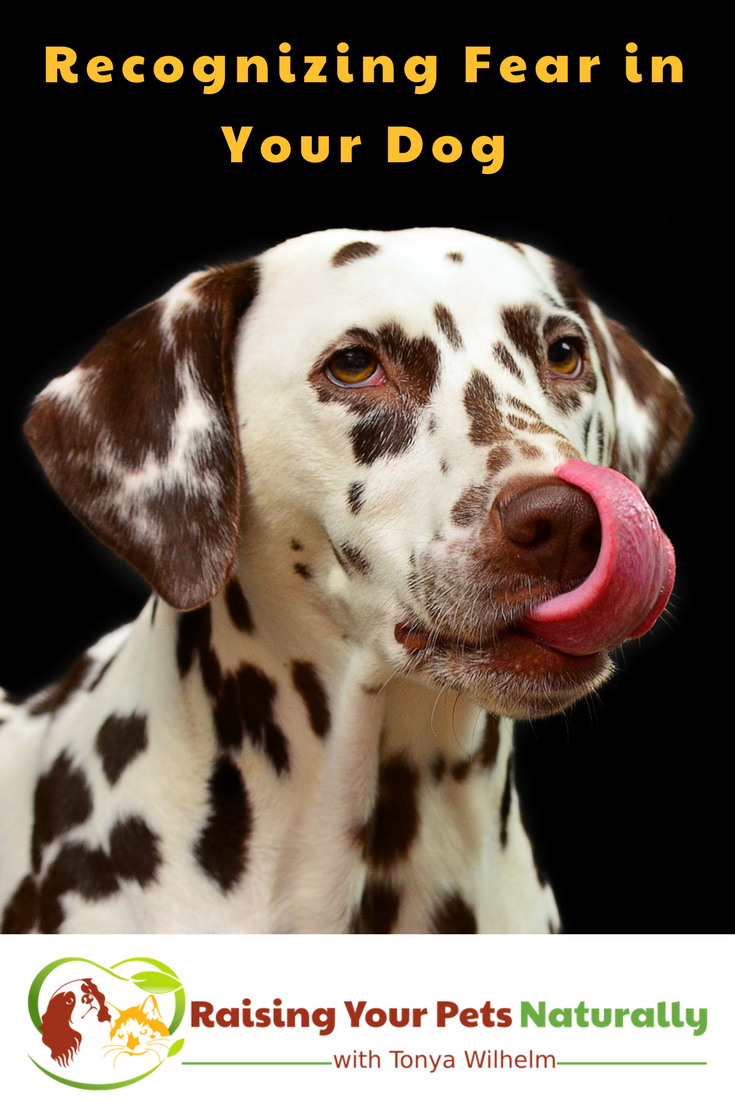Google Adsense—>

Scared Dogs: Recognizing Fear in Your Dog
Dog Body Language Basics

Fearful dogs have always stolen my heart. Maybe it’s because of my days working at an animal shelter and with dog rescue groups. Maybe it’s because of Theo, my golden retriever, had so many fears and anxieties that working with fearful dogs became second nature. But often, dog parents and even dog professionals miss the subtle signals a fearful or anxious dog may give. Or they miss what I consider red flags in a young dog’s behavior that can help predict that he may become fearful as an adult. With these dogs, I would suggest taking a very proactive role in building a dog’s confidence. But more on that later. Today, I want to focus on some of the signs that a dog is nervous, anxious, or stressed.
Watch the dog behavior video explanation & don’t forget to subscribe!
The first thing you need to know in being a good dog parent is how to communicate with your dog, and how your dog communicates with you. Your dog’s body language is the best indicator of how he feels. By understanding his body language, you will be able to tell if he is sick, nervous, or confident. Your job is to do your best to understand what your dog is trying to say, and respond appropriately. My goal in working with a dog training client is to help the client learn how to notice the smallest behavioral changes or subtle changes in a dog’s body language, and have the skills and knowledge to help their dog in a particular situation.
Reading your dog’s emotions can be tricky in the beginning. But if you are aware, and interact with your dog regularly, reading your dog’s body language can become second nature. Your dog is counting on you to help him be successful in life, and this translates to ensuring he is happy, comfortable, and not stressed.
First, dog behavior is fluid. What this means is that your dog’s emotions can change in a blink of an eye. For example, I may be working with a dog training client, and their dog is feeling relaxed and comfortable, then something in the environment changes, such as a noise in the background, and the dog becomes very anxious or stressed and can no longer do what he was doing two seconds earlier. As a dog parent, we have to be prepared for this, and be able to go with the flow and understand our dogs and their needs. Just because “he knows how to do it,” doesn’t mean he can do it in all situations, particularly if that dog is stressed or fearful.
You have probably heard about calming signals in dogs or dog calming signals. This is a phrase often used to describe when a dog is starting to show signs of stress. Some dog trainers interpret this to mean that a dog is trying to calm another dog, animal, or person down and/or to relate that they are no threat and do not mean harm or conflict. Other professionals may say these signals are better called displacement signals, and that a dog does these actions when they are stressed and they don’t know how to handle a situation. Think of chewing your nails or twirling your hair. Either way, it tells me that a dog is under some stress and would like a situation resolved in a peaceful manner.

Here are a few common dog calming signals or dog displacement gestures that may indicate a dog is stressed, fearful, or uncomfortable:
- Stiffness or tension in body
- Backing away
- Turning head away
- Freezing or seems immobile
- Heavy panting, may leave wet paw prints or drool
- Excess shedding during an event
- Clacking of teeth
- Lower tail carriage
- Lower tail wag
- Dilated pupils
- Ears turned back or flat
- Avoiding eye contact
- Whining, barking or growling
- Piloerection/Hackles Up – hair standing on end
- Hyper-Motivated – snappish with treats/toy
- Unusual sniffing
When dog parents or people entering the dog profession want to start to learn about dog behavior and a dog’s body language, the first thing I suggest is to observe your dog on a daily basis. Where do your dog’s ears typically rest? What about his tail? Eyes? What you want to find is your dog’s “neutral” or “relaxed” body. Then you can see what changes when he starts to get nervous or excited.
A few more thoughts & don’t forget to subscribe!
Today we are focusing on scared dogs. When a dog starts to get nervous or stressed, their body starts to retreat. So, their eyes may start to look more almond shape, their ears start to move back, their body starts to get lower to the ground, etc. When a dog starts to get excited or over-aroused, they tend to start to move forward. Their weight shifts forward, ears move forward, tail gets higher. When working with fearful dogs, we typically are looking to get back to neutral or happy.
Do you want homework? Pick a body part each day and watch how it changes from moment to moment. A wagging tail does not always mean a dog is happy. Think about how and where that tail is wagging. My nervous and overly aroused golden retriever had three distinct tail wags. His happy wag was loose, wide and held mid-butt. His nervous wag was lower and faster. His aroused wag was over his back, and slow, swoosh…swoosh.
Read More– Dog Body Language with Pictures and Video, Socializing a Fearful Dog with Other Dogs and Natural Calming Aids
How many tail wags does your dog have? Tell me in the comments.
Are you looking for even more ways to stay up to date with Raising Your Pets Naturally? Sign up for the newsletter for more tips and promotions. Don’t forget to be social and Like, Follow and Subscribe. Comments below are always welcome.
Facebook Twitter Pinterest Instagram YouTube
 |
 |
 |
 |





Thank you for this. Even though I’ve been a professional dog breeder, groomer, show handler, etc., I’m always ready and willing to learn more and/or be refreshed. Looking forward to more in the near future.
Thanks, Diana. That’s great. Yes, as a professional we are always learning on a daily basis. I’m glad you are enjoying the articles.
It took me time to understand Layla’s fears as I rescued her when she was about 4 years old but today can read her like a book and watch her carefully. I avoid anything today that I feel might scare her plus always keep a bed in the shower where she likes to go sometimes when not feeling safe.
What a great MOM! Layla is so very lucky to have you. I’m glad she has a spot she can feel comfortable when needed.
Yes, this is an excellent article. We went through two training classes that taught us to jerk our dog with a plastic training collar, which made him even more fearful of other dogs and many other distractions while out walking. After our beagle’s fears worsened, we began a positive training routine where we would practice avoidance at first, then gradually began rewarding him with treats when he would see a dog at a safe distance and look to us for guidance. Eventually, we could shorten our distance between our dog and whatever was causing him fear. After six months, there is a huge difference in his reactions toward other dogs. We may not be able to go up and greet a strange dog, but we can pass him calmly on the opposite side of the street, sometimes without treats and giving only praise. The difference is amazing.
Thanks. So sorry for your first experience. Yes, space and positive training can get you there. I look forward to you reading my upcoming articles on the topic.
Yes, space and positive training can get you there. I look forward to you reading my upcoming articles on the topic.
My dog is 7 months old and she is so scared anywhere but in my garage
She’s scared inside she is scared in the car and freaks out on a leash… I’m trying to take her everywhere with me for car rides and to work, there are plenty of load noises and things going on and she is fine but as soon as I take her out side she won’t come and then try’s to book it out the door and won’t come back to me she acts timmed and scared I need help this little girl of mine I love so much
Oh, I am so sorry Rainey. Please send me an email and we can set up a private session (phone/Skype or in person) https://raisingyourpetsnaturally.com/contact-me/